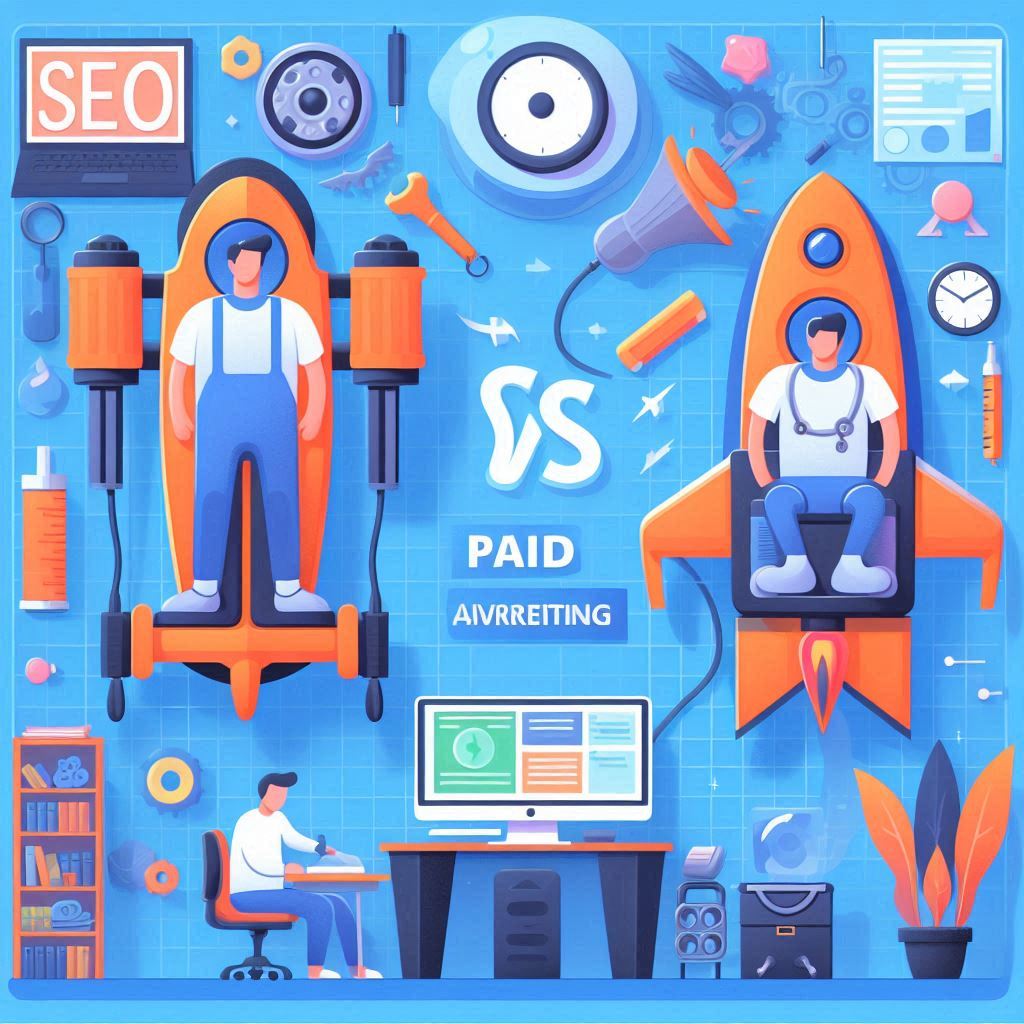In the realm of digital marketing for therapy centers, the debate between Search Engine Optimization (SEO) and Paid Advertising often sparks discussions about effectiveness, budget allocation, and long-term growth. Both SEO and Paid Advertising offer distinct advantages and challenges, making it crucial for therapy centers to understand their differences, benefits, and suitability for achieving marketing goals. This article dives deep into the nuances of SEO and Paid Advertising, drawing from personal experiences and specific anecdotes to help therapy centers navigate this critical decision.
Understanding SEO: Building Long-term Visibility
SEO involves strategies aimed at improving a therapy center’s organic (unpaid) visibility in search engine results. It’s a marathon rather than a sprint, focusing on optimizing website content, structure, and authority to rank higher for relevant keywords over time. When I first started my therapy practice, I invested time in understanding SEO basics. It was a gradual learning curve, from optimizing my website with relevant keywords to earning backlinks through collaborations and content marketing efforts. Over time, these efforts paid off with increased visibility in search engine rankings.
Benefits of SEO for Therapy Centers
- Long-term ROI: SEO efforts can yield sustainable results with continuous investment in quality content, technical optimizations, and backlink building.
- Trust and Credibility: Higher organic rankings often equate to perceived authority and trustworthiness among potential clients searching for mental health services.
- Cost-effectiveness: Once established, organic traffic from SEO requires minimal ongoing investment compared to Paid Advertising.
Practical SEO Strategies for Therapy Centers
- Keyword Research: Identify relevant keywords (e.g., “therapy near me,” “counseling services,” “mental health support”) to target potential clients actively searching for therapy options.
- Content Optimization: Create informative, engaging content addressing common mental health concerns, therapy approaches, and client testimonials. Optimize content with targeted keywords and meta tags.
- Local SEO: Optimize Google My Business listing, solicit client reviews, and ensure consistent NAP (Name, Address, Phone Number) information across online directories.
Understanding Paid Advertising: Immediate Visibility, Controlled Budget
Paid Advertising, such as Google Ads or social media ads, offers therapy centers the ability to target specific demographics, interests, and behaviors with ads displayed prominently in search results or social media feeds. Early in my practice, I experimented with Google Ads to promote specialized therapy programs. The immediate visibility and precise targeting capabilities helped attract inquiries and appointments quickly, albeit at a cost.
Benefits of Paid Advertising for Therapy Centers
- Immediate Results: Paid ads can generate traffic and inquiries almost instantly, making them ideal for short-term campaigns or promoting time-sensitive services.
- Targeted Reach: Precision targeting allows therapy centers to reach specific demographics interested in mental health services, maximizing ad relevance and ROI.
- Flexibility: Ads can be adjusted in real-time based on performance metrics, allowing therapy centers to optimize campaigns for better results.
Practical Tips for Effective Paid Advertising
- Clear Goals and Budget: Define campaign objectives (e.g., consultation bookings, webinar sign-ups) and allocate a realistic budget to achieve desired outcomes.
- Ad Creatives: Craft compelling ad copy and visuals that resonate with your target audience’s needs, emphasizing unique selling propositions (USPs) and calls-to-action (CTAs).
- Monitoring and Optimization: Regularly monitor ad performance metrics (e.g., CTR, conversion rate, cost per acquisition) to identify successful strategies and areas for improvement.
Making the Decision: SEO vs. Paid Advertising
Choosing between SEO and Paid Advertising depends on several factors unique to each therapy center’s goals, budget, and timeline. Here are key considerations:
- Long-term Strategy: If prioritizing sustainable growth and establishing authority in the long run, investing in SEO is advisable, albeit with patience for results to materialize.
- Immediate Needs: For therapy centers needing quick visibility and client acquisition, especially for new practices or time-sensitive promotions, Paid Advertising offers immediate results.
- Budget Constraints: Evaluate the budget allocation for marketing efforts. SEO requires upfront investment in content creation and optimization, while Paid Advertising requires ongoing budget for ad spend.
Integrating Both Strategies for Maximum Impact
While SEO and Paid Advertising offer distinct benefits, a balanced approach often yields the best results for therapy centers. Consider integrating both strategies to capitalize on their respective strengths:
- Synergy: Use Paid Advertising to complement SEO efforts during initial stages or for specific campaigns, leveraging immediate visibility while awaiting organic growth.
- Retargeting: Retarget website visitors who didn’t convert through Paid Advertising, reinforcing your therapy center’s brand and services through multiple touchpoints.
Suggested reading: Holistic Digital Marketing: Combining SEO, Google Ads, Facebook, And Instagram For Therapy Centers
Conclusion: Finding Your Digital Marketing Mix
In conclusion, the decision between SEO and Paid Advertising for your therapy center hinges on understanding your goals, timeline, and budget constraints. By leveraging SEO for long-term visibility, trust-building, and cost-effectiveness, therapy centers can establish a strong online presence and attract organic traffic over time. Simultaneously, Paid Advertising offers immediate visibility and precise targeting capabilities, making it a valuable tool for driving inquiries and appointments in the short term.
As therapy centers navigate the complexities of digital marketing, integrating both SEO and Paid Advertising strategies based on their unique needs and objectives can maximize visibility, client acquisition, and community impact. By prioritizing authenticity, relevance, and client-centric approaches in their digital marketing efforts, therapy centers can effectively connect with individuals seeking mental health support and contribute meaningfully to their well-being journey.

I am Ashutosh – a seasoned digital marketer, bringing digital transformation to businesses, complementing businesses’ growth via generating qualified leads, drive site inbound traffic via organic and inorganic approach, & build their brands through useful, well-designed marketing strategies and Marketing Automation implementation via Chat GPT, HubSpot & Zoho.







